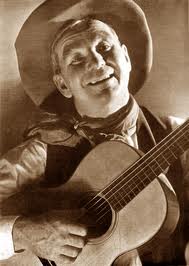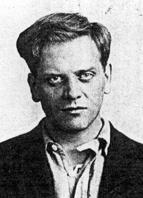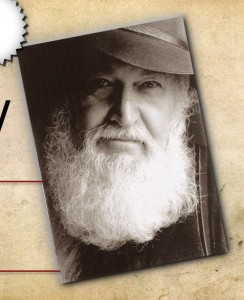Text by John Pietaro (http://theculturalworker.blogspot.com/2015/05/revolutionary-cultural-work-on-crises.html)
About the LEFT FORUM
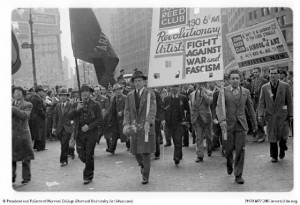 The art of rebellion is a tradition as old as dissent itself. Radical writers, musicians, painters, actors, dancers and other creative activists have long used their artwork as a weapon in the fight for social justice. If the very nature of expressive freedom lends itself toward a revolutionary voice, then it is arguable that the arts gave birth to radicalism, or in the least offered a vision toward its path. And the cultural workers fight for his or her own freedom of expression—and against the confines of censorship—further exemplifies the voice of creativity in this good fight.
The art of rebellion is a tradition as old as dissent itself. Radical writers, musicians, painters, actors, dancers and other creative activists have long used their artwork as a weapon in the fight for social justice. If the very nature of expressive freedom lends itself toward a revolutionary voice, then it is arguable that the arts gave birth to radicalism, or in the least offered a vision toward its path. And the cultural workers fight for his or her own freedom of expression—and against the confines of censorship—further exemplifies the voice of creativity in this good fight.
One can easily look to the works and dreams of revolutionary artists of every stripe to see the connection with the Left in general; those members of the creative community that are of the Right are in the minority and their opinions tend to not do well at gallery openings, play read-throughs, late night jam sessions or even intermission kibitzes at theatre juice bars.
However, the artists who have specifically focused their repertoire on progressive struggles, people’s stories and real-time issues, move into a specific realm, one which pulls them far from the art-for-art’s-sake idiom. These artist-activists extend the possibilities of the dissident’s pamphlet by leaps and bounds. They have the power to put melody to fiery speeches and add a universe of color to the black-and-white of dogma. They add the necessary ingredient of emotion to demonstrators’ placards and hold the history of revolutionary art within their hands.
In analyzing the breadth of cultural work, eras of a rather advanced sense of struggle and propensity toward collectivism clearly produce artists—and artforms–of striking radicalism. Between the latter part of the 19th century and the first few decades of the 20th, the horrors of unbridled capitalism, racism, anti-Semitism, sexism, imperialism, classism and xenophobia were realized in the Industrial Revolution, wars of profit, financial panics and recessions, the Great Depression, and a wealth of reactionary governmental repression. The revolutionary responses to this were by no means confined to professional revolutionists, organizers and advocates; the creative community, too, spoke out and stood up, but in new and daring ways.
Cultural workers can be credited with beating swords into revolutionary artists’ weapons. The Industrial Workers of the World, even in its founding year of 1905, counted song, visual art, poetry and journalism among its strongest assets. Legends such as Joe Hill, Mac McClintock and Ralph Chaplin (and later Utah Phillips and Phil Ochs) are still recalled as the core of the movement. The Socialist Party’s own cultural program began in this period and included the likes of Jack London and Carl Sandburg. But it was the Communist Party and its nation-wide cultural commission that advanced the cause in a most profound way. Celebrated writer John Reed was actually a founder of the CP and in his brief life stood as a model for all others to follow.
During the 1920s, 30s and 40s, most of the great artists of the era stood as Party members or Fellow Travelers. These included Langston Hughes, Woody Guthrie, Max Eastman, Paul Robeson, Floyd Dell, 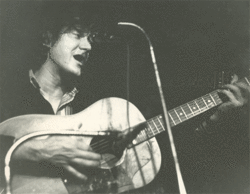 Rose Pastor Stokes, William Gropper, Claude McKay, Michael Gold, John Howard Lawson, Dalton Trumbo, Aaron Copland, Dashiell Hammett and an amazing array of others, most of which would suffer the pains of the Blacklist in the decades beyond.
Rose Pastor Stokes, William Gropper, Claude McKay, Michael Gold, John Howard Lawson, Dalton Trumbo, Aaron Copland, Dashiell Hammett and an amazing array of others, most of which would suffer the pains of the Blacklist in the decades beyond.
And when the cultural workers build their own institutions of higher learning for dissent, look out. In a 1930 article in the Daily Worker, the writer and organizer Michael Gold wrote of the founding of the John Reed Club. This was an organization to foster writers and other creative artists in the struggle against raging capital as the Great Depression boiled over onto the so-called working class. Gold wrote:
“The John Reed Club was organized about two months ago here in New York. It is a small group of writers, artists, sculptors, musicians and dancers of revolutionary tendencies…Several activities have begun. The artists arranged an exhibition at the Workers Co-Operative House in the Bronx. About 35 pictures were hung. The exhibit will be shown for about four weeks. Over 300 workers came to the opening. There was a furious discussion led by Lozowick, Basshe, Gropper, Klein and others…At the next meeting I shall propose the following–
“That every writer in the group attach himself to one of the industries. That he spend the next few years in and out of this industry, studying it from every angle, making himself an expert in it, so that when he writes of it, he will write with like an insider, not like a bourgeois intellectual observer. He will help on the publicity in strikes, etc. He will have his roots in something real. The old Fabians used to get together and write essays based on the books they had read. We will get close to the realities”
The John Reed Club’s Manhattan office began a series of local branches around the country and by 1932 devised an expanded mission statement which identified core values, including the support of labor and the fight against imperialism, white chauvinism, fascism, oppression of immigrants. The Clubs pledged to “Fight against the imprisonment of revolutionary writers and artists” and cited the organization’s principal goal as, “forging a new art that shall be a weapon in the battle for a new and superior world” (Draft Manifesto, John Reed Clubs, 1932).
In the throes of the world’s worst financial disaster, in the face of a newly expansive level of corporate control, greed and avarice, as waves of fascism were spreading violently across the globe, revolutionary cultural workers associated with the John Reed Clubs not only offered their radical artistic visions to the bruised landscape, but actively engaged in the street-heat for democracy and change. Members were active in the Poor Peoples Marches, fights against lynchings and discrimination, union strikes and organizing actions, May Day Parades, educational seminars and tutelage, and a wide swath of political actions. These were fused into the missions of the Workers Music League, the Red Dancers, the League of American Writers, “The New Masses”, the Film and Photo League, “Partisan Review”, the League of American Artists and several international Congresses of Writers and Artists.
Eventually, the cultural workers’ institutions would be torn apart by often excruciating conflicts, within and without. But the lure of creativity is more than compelling and the full catalog and the legacy of these powerful figures of revolutionary creativity is almost insurmountable.
And so stand as examples of what could have been—and what may still be.



